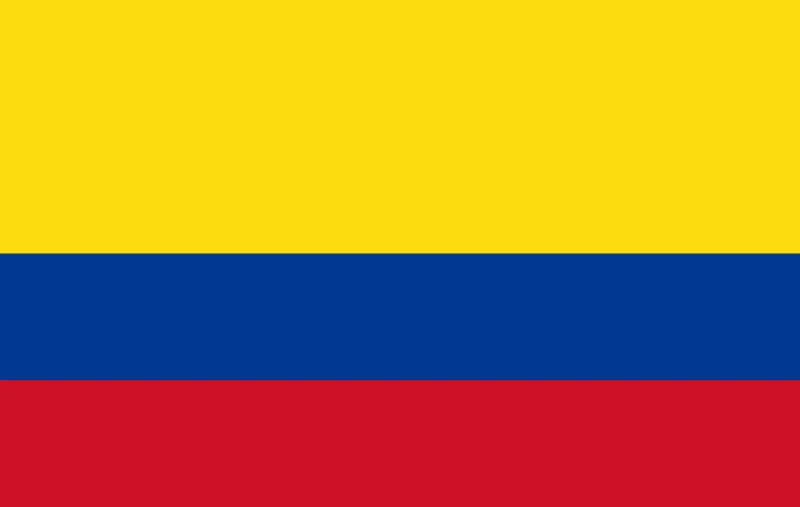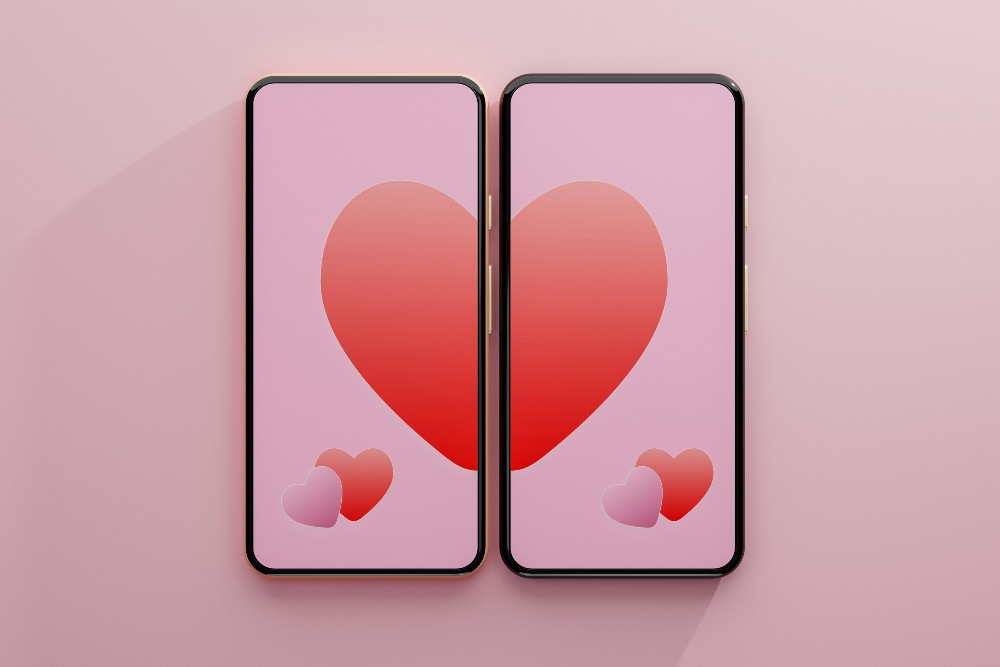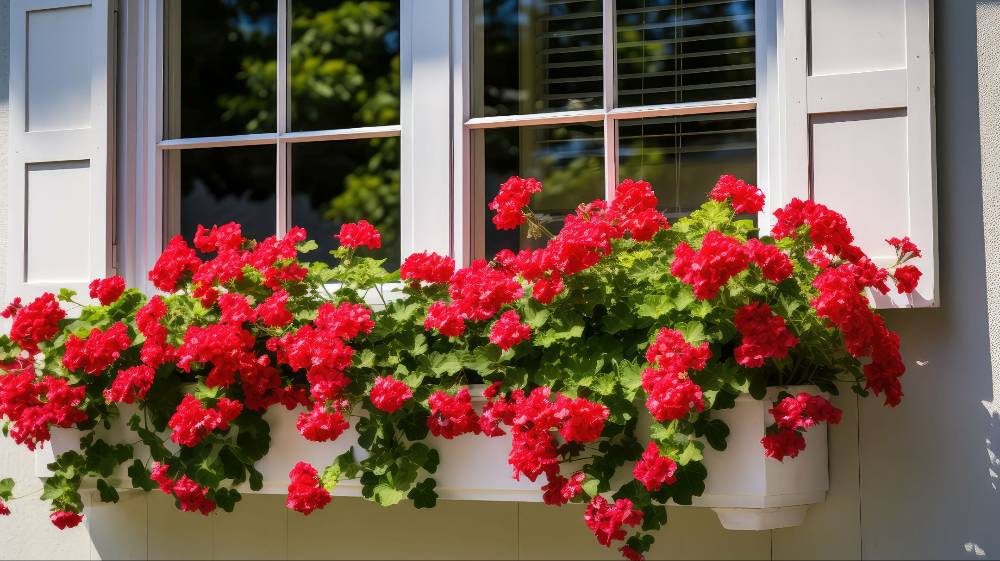How many country flags can you recognize? Do you know their symbolism? Every color or symbol on a country flag has a deep meaning, representing the values of that country. The most common flag colors are red, white, and blue.
There are also many country flags with red, blue, and yellow color combinations. Some of the most famous countries with red, blue, and yellow flags are Romania and Colombia, but there are many other countries whose flags are in this color combo.
The Symbolism of Red, Blue, and Yellow on a Flag
Before we take a closer look at countries with red, blue, and yellow flags, let’s first discuss the symbolism of these colors. No matter which flag you take as an example, its colors aren’t chosen by accident. These colors represent a certain principle or ideal.
- Red – Courage, strength, bravery, blood, power, war, victory, dominance, and revolution.
- Blue – Freedom, liberation, justice, vigilance, perseverance, determination, and good fortune.
- Yellow – Wealth, energy, and happiness.
Keep in mind that these are more generalized meanings. The exact meaning of a certain red, blue, and yellow flag will depend on its history and cultural context.
Countries With Red, Blue, and Yellow Flags
1. Armenia

Armenia’s history is tumultuous, and its flag represents that. It is a horizontal tricolor flag, with red at the top, blue in the middle, and yellow at the bottom. Red represents the bloodshed during the Armenian genocide.
Blue represents hope and rebirth. Yellow represents courage and Armenian independence. This flag was recognized on August 24th, 1990, when Armenia officially separated from the Soviet Union.
2. Romania
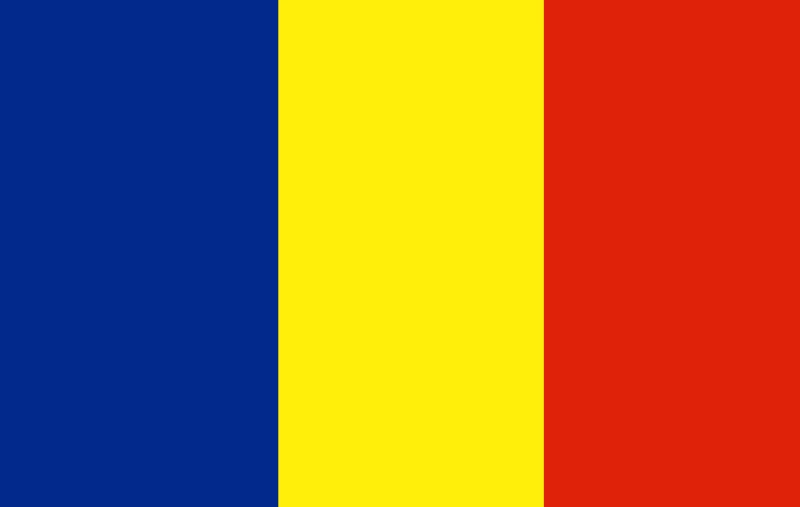
Another former communist country, Romania, has a flag with a similar backstory to the Armenian flag. During its modern history, Romania used several versions of the red, blue, and yellow flags, but the most recent version was officially adopted in December 1989.
1989 was significant for Romanians, as it was the year they overthrew Nicolae Ceaușescu’s dictatorship. Their vertical tricolor flag represents the Romanian fight for liberty, independence, and unity.
3. Colombia
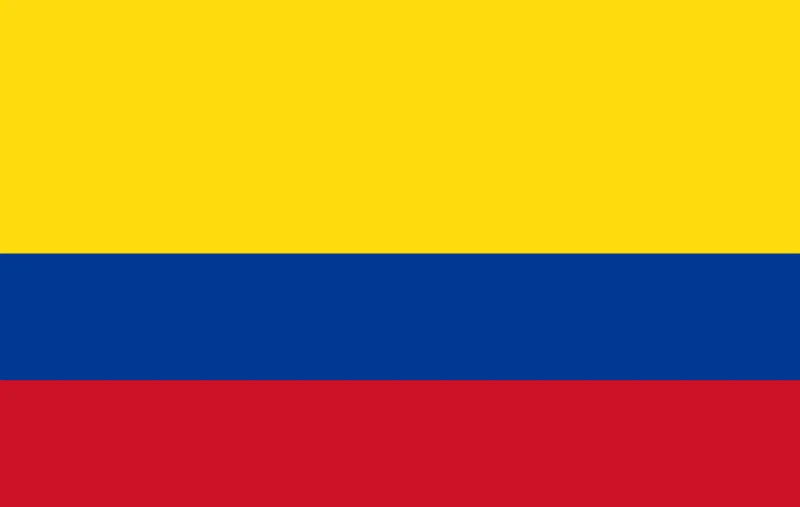
Colombia also had to fight for its independence. On July 20th, 1810, Colombia gained independence from Spain. Its horizontal tricolor flag symbolizes this event. Unlike most striped tricolor flags, the Colombian flag has stripes of different sizes.
On top of the flag is a yellow color, then blue in the middle, and red at the bottom, in a ratio of 2:1:1. The yellow stripe is the biggest one, and it symbolizes Colombian wealth: gold, fertile lands, and the Sun. The blue stripe symbolizes the Colombian sky, sea, and rivers. The red stripe symbolizes the blood spilled for independence.
4. Chad
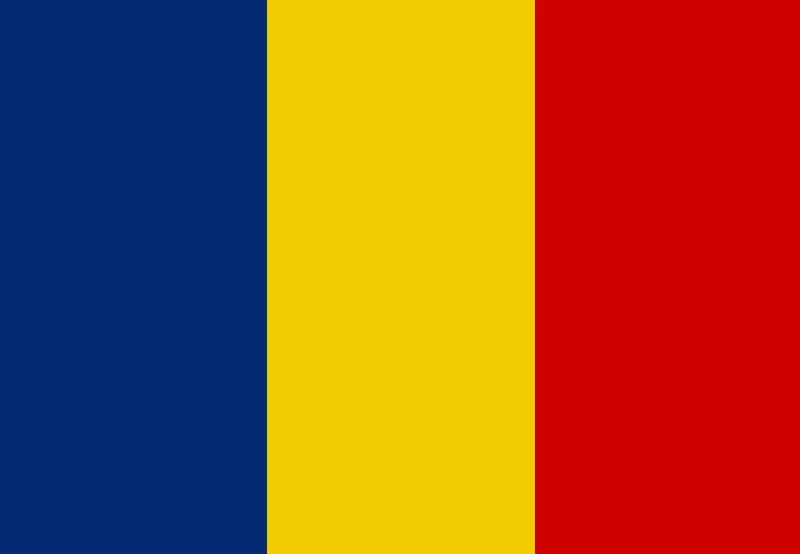
Chad’s national flag looks almost exactly the same as the Romanian flag. It is a vertical tricolor flag with blue, yellow, and red stripes (from left to right). The similarity in flags has even caused a crisis between the two countries. However, to this day, both countries have decided to keep their existing flags.
Chad’s flag was officially adopted when this country gained its independence from France on August 11, 1960. Red color represents the fight for independence, blue represents the sky and hope, and yellow represents the sun and desert.
5. Mongolia
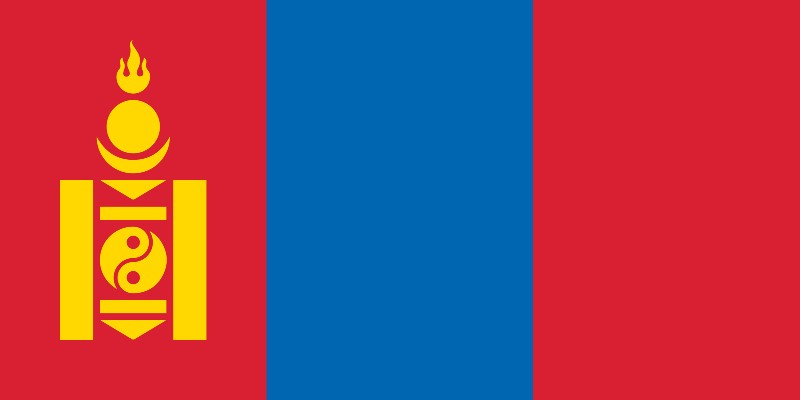
A rather unique flag, this is a vertical triband with red stripes on each side and a blue stripe in the middle. The original version of this flag was adopted on June 10th, 1945, but the most recent version with standardized colors was adopted on July 8, 2011.
On the leftmost red band, there is a yellow Soyombo symbol, a national symbol of Mongolia. The red stripes represent eternity, while the blue stripe represents the sky. The Soyombo symbol represents the sun, moon, fire, earth, and water. Inside this symbol, there is also a yin-yang symbol representing the duality of life.
6. DR Congo
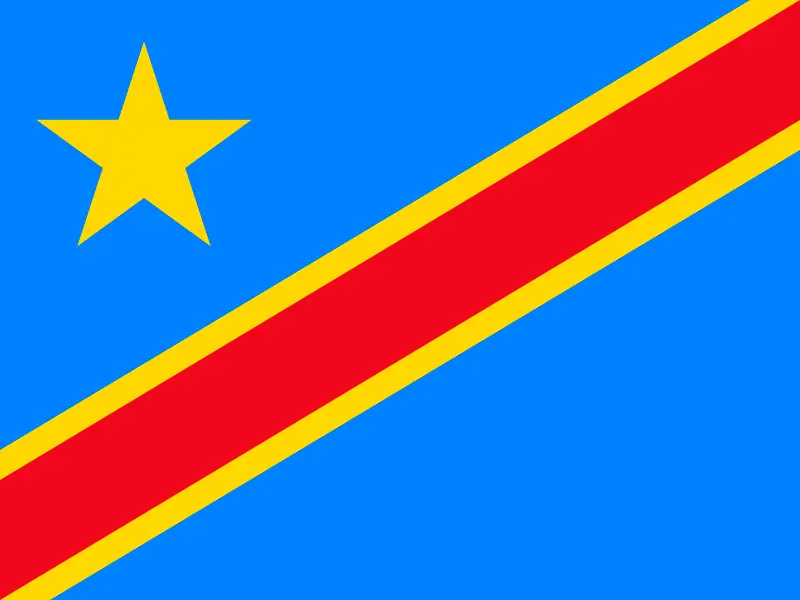
This is another unique flag design. This flag has a sky-blue base with one diagonal red stripe. On both sides of the red stripe, there are thin yellow stripes. In the upper left corner, there is a yellow star. The flag was officially adopted on February 18th, 2006.
DR Congo had a bloody past as a Belgian colony, and its flag symbolizes that. Red represents the blood of the martyrs, yellow represents the country’s wealth, and blue represents the country’s future.
Red, Blue, and Yellow Flags with Other Colors
Below are the countries whose flags are primarily red, blue, and yellow, but they also contain other colors, such as black, white, gold, and green.
7. Liechtenstein

This flag has two horizontal stripes, with a blue stripe on the upper part and a red part right below it. The width-to-length ratio is 3:5. In the upper left corner of the blue stripe, there is a yellow/gold crown outlined with black lines.
The blue color represents the sky, while the red color represents the fires lit in homes all across this tiny country. The crown was added later when it was discovered that Liechtenstein’s flag was identical to Haiti’s flag.
8. Andorra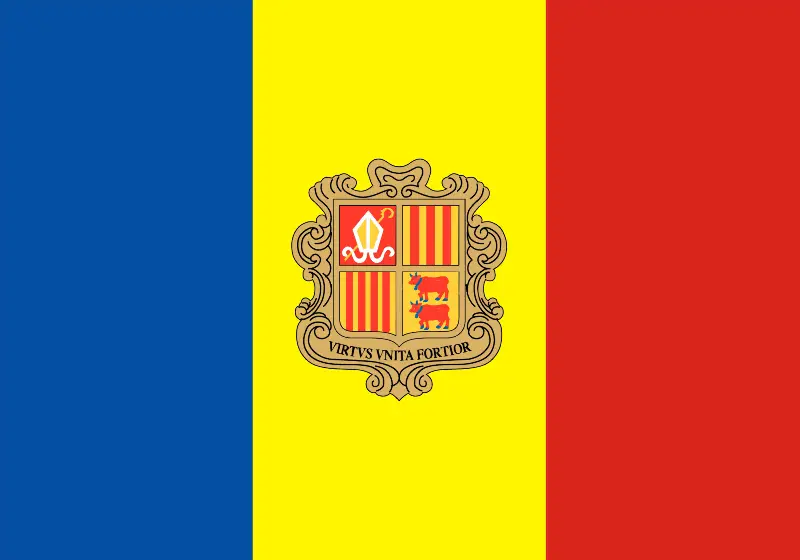
Andorra’s flag is a vertical tricolor flag with the coat of arms in the middle. The yellow stripe is slightly bigger and in the middle, with the blue stripe on its left and the red stripe on its right. This flag was adopted in 1866.
Since Andorra has close ties to both France and Spain, its flag is tricolor like France’s flag, but it contains a red-yellow combo and a golden coat of arms like Spain’s flag. Apart from the Moldovan flag, Andorra’s flag is the only national flag that features cattle.
9. Moldova
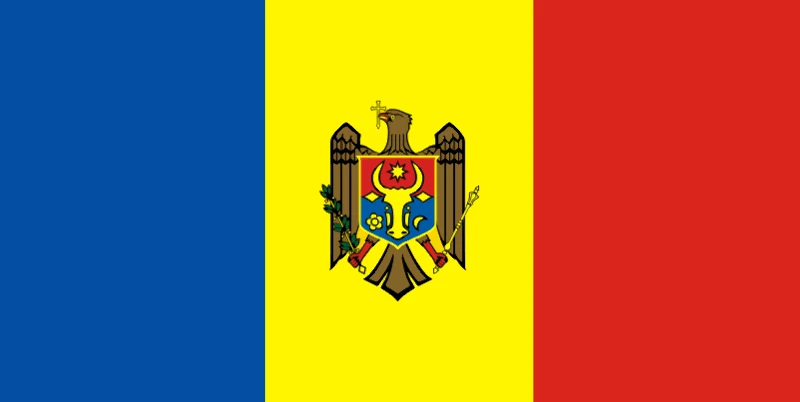
The Moldova flag is a vertical tricolor flag with the coat of arms in the middle. It has almost the same color scheme as the Andorra flag. The biggest difference lies in Moldova’s coat of arms, which features a golden eagle holding an Orthodox cross and an olive branch. On the eagle’s chest, there is a red-blue shield with a bull’s head on it.
The colors of this flag are inspired by Romania’s flag. These two countries share similar cultures and history, so it makes no wonder that they have similar flags. The Moldovan flag was officially adopted on November 6th, 1990.
10. Malaysia

The Malaysian flag has 14 horizontal stripes, 7 of which are red and 7 are white. In the upper left corner, there is a blue canton that has a yellow crescent moon and a 14-point star. The current flag version was officially adopted on September 16th, 1963.
The crescent moon symbolizes Islam, the main religion of Malaysia. The stripes represent the federal states of this country. Red, white, and blue represent Malaysia’s place in the Commonwealth, while yellow represents its sovereignty.
11. Philippines
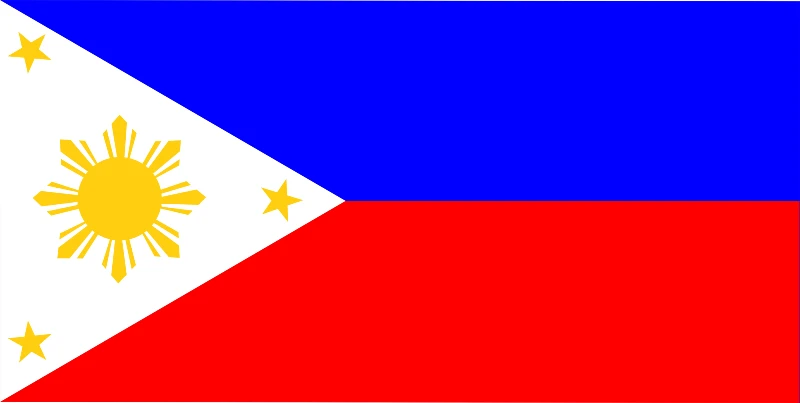
This flag has a white equilateral triangle on its hoist and two horizontal stripes, red and blue, stretching across the rest of the flag. Inside the triangle, there is an 8-ray golden sun and a five-pointed star in each triangle vertex. This flag originated in 1898, but its current version was officially adopted on February 12th, 1998.
The blue part of this flag symbolizes justice, truth, and peace. The red part symbolizes patriotism and valor. White symbolizes liberty, fraternity, and equality. The sun and stars symbolize unity and freedom. If the flag is rotated so that the red part is up, this symbolizes the state of war.
12. Venezuela
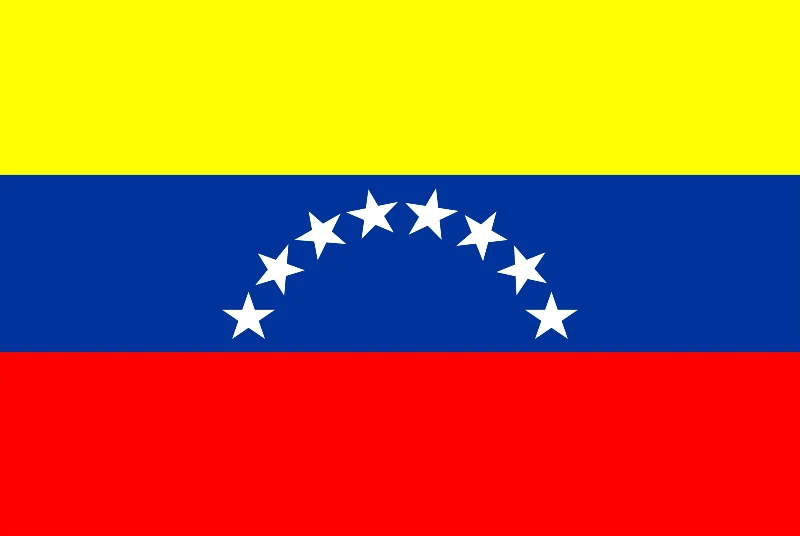
The Venezuelan flag is a horizontal tricolor with a yellow stripe at the top, a blue stripe in the middle, and a red stripe at the bottom. In the middle of the blue stripe, there is an arc of 8 white stars. Sometimes, there will be a coat of arms in the upper left corner. The current version of this flag was adopted on March 12th, 2006.
The red stripe symbolizes blood spilled in the fight for independence from Spain. The blue stripe symbolizes the Caribbean Sea and Venezuelan beaches. The yellow stripe symbolizes Venezuelan’s riches as well as the Sun and its light.
13. Ecuador
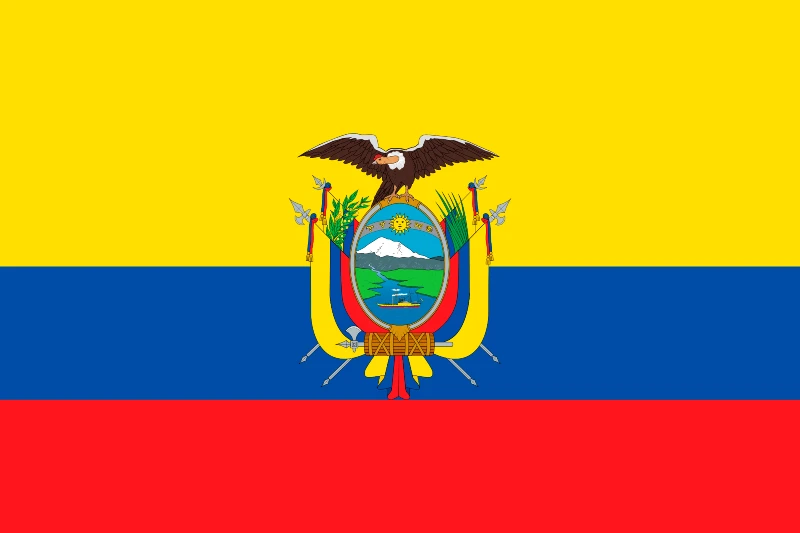
The Ecuadorian flag is a horizontal tricolor flag, with its top yellow stripe being twice the size of the blue and red stripes. In the center of the flag, there is a coat of arms that shows the mountain Chimborazo and the river Guayas. On top of the coat of arms, there is a black and white condor bird spreading its wings.
The red color symbolizes the blood spilled for freedom and independence. The blue part symbolizes the ocean and the sky. The yellow symbolizes Ecuadorian crops and fertile soil.
Notable Mentions
- Aruba
- Kiribati
- Cape Verde
- Antigua and Barbuda
- Åland Islands
- Tuvalu
- Eswatini
Conclusion
Flags are more than just some fancy pieces of colorful fabric. The colors of each flag have a deep meaning for this flag’s country and its people. Many countries with red, blue, and yellow flags have similar stories.
These countries fought for their independence and freedom. Their flags reflect that fight. The red color symbolizes blood spilled during these fights, yellow symbolizes wealth and happiness, and the blue symbolizes sky, sea, and hope.

